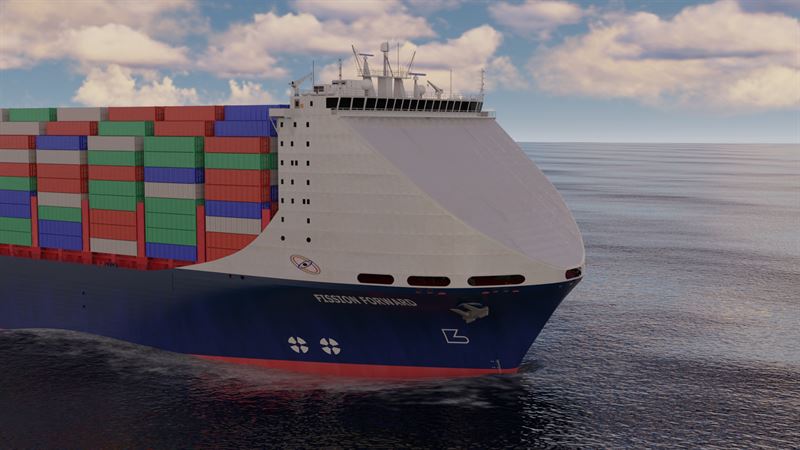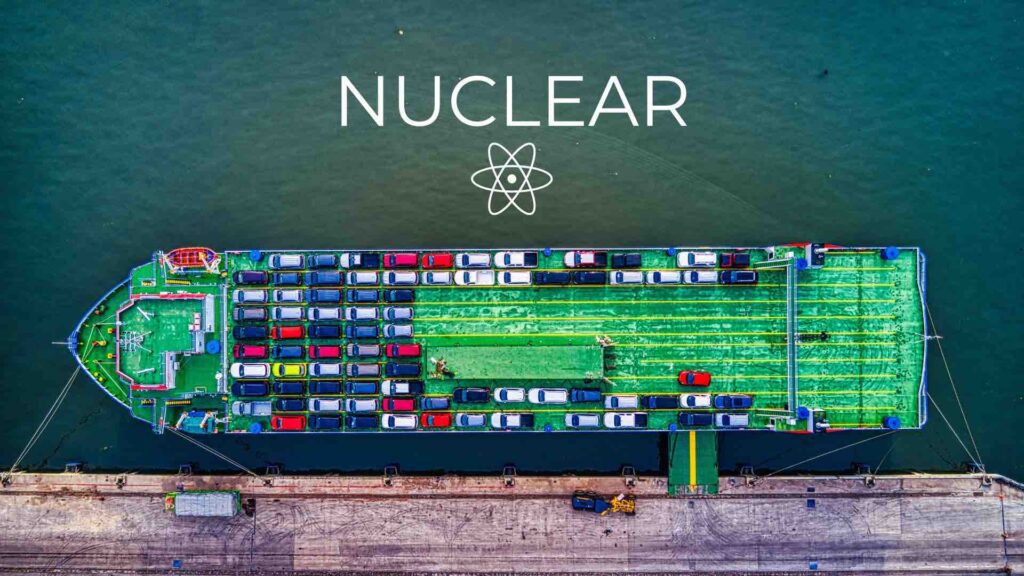28 November 2024
Nuclear Propulsion – New study on the potential

Groundbreaking ABS study explores the potential of commercial Nuclear Propulsion application on a container vessel and a tanker.
Table of Contents
Concept
The transformational impact of nuclear propulsion on the design, operation, and emissions of a 14k TEU container vessel and a 157k DWT Suezmax tanker have been modeled by ABS and Herbert Engineering Corp. (HEC) in a groundbreaking study.
ABS commissioned HEC to carry out the study to explore the potential of advanced modern reactor technology for commercial marine propulsion. The study is designed to help the industry better understand the feasibility and safety implications of nuclear propulsion and to support future development projects.

Nuclear shipping to solve climate change?
Nuclear shipping to solve climate change considering the lack of bunkering infrastructure for many of the alternative fuel options.
Ship Nerd
Nuclear Propulsion
The study, which involved input from leading nuclear reactor developers, modeled the impact of two, lead-cooled, 30MW fast reactors on the container carrier, finding it would likely increase cargo capacity and operational speed while eliminating the need for refueling during its entire 25-year lifespan. On the Suezmax vessel, the study found the addition of four, 5MW, heat-pipe microreactors, while decreasing cargo capacity, would raise operational speeds and only require refueling once during its 25-year life. Both concept vessels would emit zero CO2.
“Our findings from this latest cutting-edge research underscore why the industry cannot afford to ignore the vast potential offered by nuclear propulsion both in terms of emissions reduction and operational efficiency. A net-zero world is more easily realized through nuclear propulsion, and we are putting in place the foundations for that future today. Turning this into a practical reality will require significant public sector support and ABS is well placed to bring governments and industry together,”
“Advanced or small modular reactors address many of the issues traditionally associated with nuclear for commercial maritime use, with enhanced safety and efficiency, reduced cost and waste and proliferation prevention. Nevertheless, many questions need to be answered and it is critical that the industry evaluate these technologies with a laser focus on safety.”
Christopher J. Wiernicki, ABS Chairman and CEO
“HEC is pleased to be able to support ABS and explore the practical application of nuclear power on board. This study is helping us to understand in detail both the potential of modern reactor technology and how this will affect the design and operation of future vessels,”
Robert Tagg, Senior Principal Naval Architect, HEC
ABS is playing a pioneering role in supporting the development of nuclear propulsion for commercial vessels. The U.S. Department of Energy (DOE) has awarded ABS a contract to research barriers to the adoption of advanced nuclear propulsion on commercial vessels. The DOE has also contracted ABS to support research into the thermal-electric integration of a nuclear propulsion system on a commercial vessel being carried out by the University of Texas.
Source: ABS
See Also
What if you could build a vessel that doesn’t need to refuel for 25 years and could still sail at a higher service speed than normal despite more stringent emission requirements?
This could become a reality. A new type of nuclear-powered vessel is on the horizon, using the Molten Salt Reactor (MSR).
But what is a Molten Salt Reactor? How does it work?
A Molten Salt Reactor (MSR) is an advanced nuclear reactor that uses liquid fuel. Note that, most conventional reactors use solid fuel instead. The fuel salt in an MSR contains uranium fuel which keeps the fuel-salt liquid at a high temperature.

Molten Salt Reactor (MSR): Nuclear Explained
A new type of nuclear-powered vessel is on the horizon, using the Molten Salt Reactor (MSR). What is MSR? How does it work?


